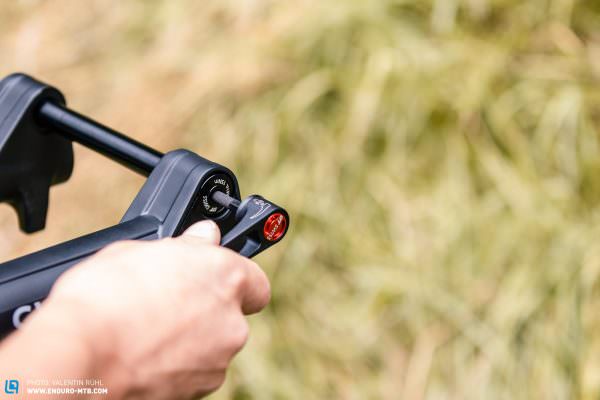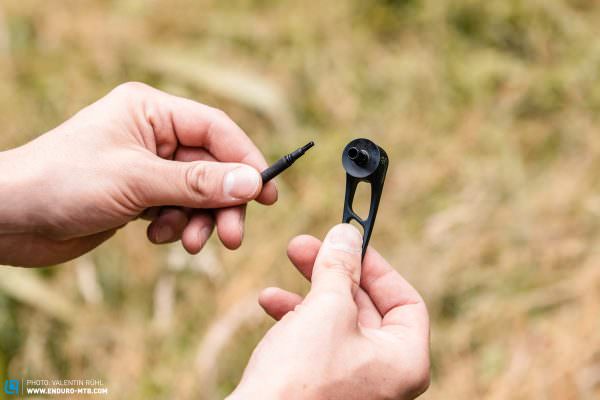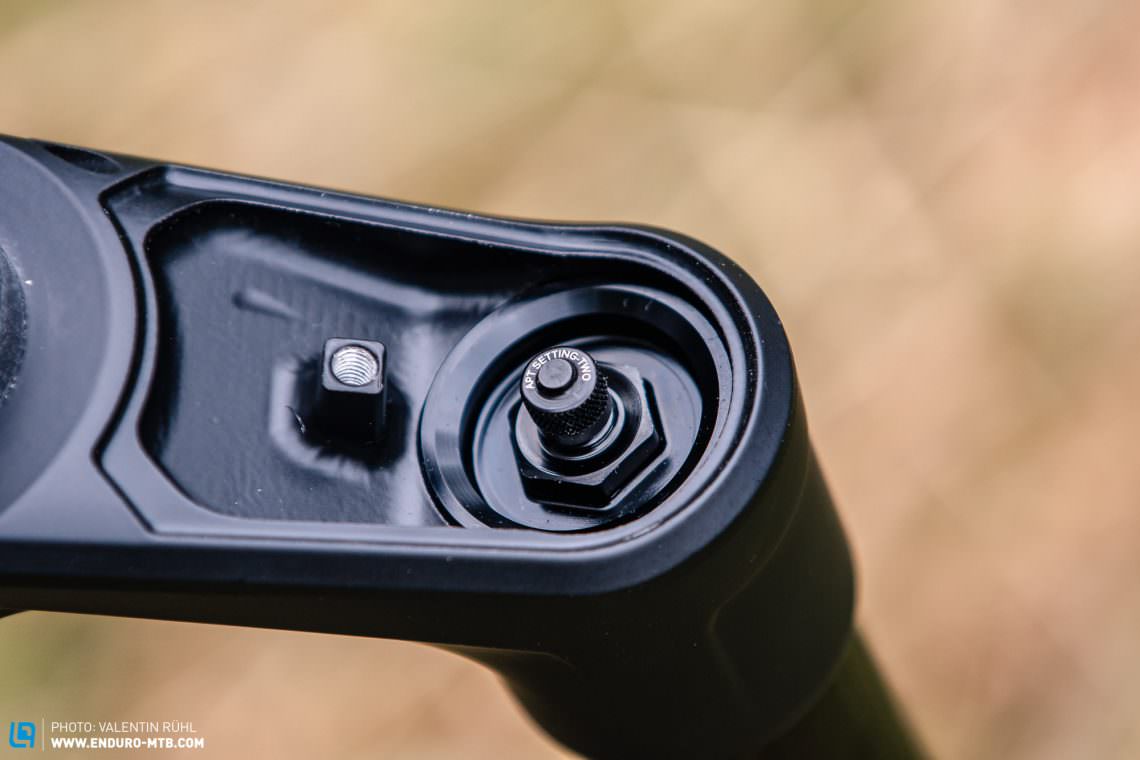DT Swiss is breaking new ground in design, gone are the days of the rearward facing fork bridge. With the F 535 ONE, DT Swiss presents an all-new trail and enduro fork, developed from the ground up. The fork looks futuristic on the outside, but where things get high-tech is when you consider the insides. To find out whether hybrid spring and travel-dependent damping works, we took the 160 mm travel fork for a test ride, and we’ll tell you what it’s capable of.

When you think of the DT Swiss brand, most likely the first things that come to mind are high-quality wheels, hubs, spokes and rims. Although DT Swiss has been making suspension forks for many years, their striking rearward facing bridges are rarely spotted on the trail. That is set to change with the newly developed F 535 ONE. The specification when designing the € 1,149 fork was for riders to be able to “set and forget.” Setting up the fork requires minimal effort, and supposedly, once that is done, you’re done, and it’ll work well on different kinds of trails without specific tuning. To this end, the Swiss brand has combined a coil spring for sensitivity with an easy-to-adjust air spring. In addition to speed, a new dimension has been added to damping: travel. The travel-dependent compression increases as the fork is compressed. In combination with the stiff, boost-spaced cast, this should result in a supple fork with sufficient reserves for hard blows. To find out if it does, we tested the performance of the F 535 ONE on rough alpine trails and fast bike park tracks with big jumps and compressions.
The most important specs of the F 535 ONE
- available in 27.5″ and 29″/27.5+
- travel between 130 mm and 160 mm
- COILPAIR spring combines air and coil spring
- APT system for adjusting the progression curve with spacers
- Lockout
- travel- and speed-dependent damping PLUSHPORT
- Boost thru-axle
- Weight: 2072 g
- Price: € 1,149

The F 535 ONE fork in detail
The first word that comes to our mind when looking at the DT Swiss fork is “clean.” All dials, valves and knobs of the F 535 ONE are hidden beneath screwed-on covers. Why? Because the fork is meant to work well enough after the initial setup that you don’t have to keep turning the dials. All adjustment screws can be operated with a 10-mm Torx driver. Since you won’t find it on most multitools, it’s a good thing DT Swiss has thought about integrating one into the fork’s axle.





The springs of the DT Swiss F 535 ONE – COILPAIR
One of the main problems of air-sprung forks is the sensitivity of their response. Although manufacturers are increasingly using larger and more effective negative air chambers, which significantly reduces the breakaway force, they still don’t come close to the sensitivity of a coil spring. For this reason, DT Swiss combines an air spring with an additional coil spring in the COILPAIR spring to combine the advantages of both systems. The steel spring responds sensitively to small impacts, while the air spring can easily be adjusted to the rider’s weight and volume spacers adjust the progression curve to personal preference. A great deal of development has gone into the properties of the coil spring, so that it responds sensitively without compressing too easily, independent of rider weight. Riders on the extreme ends of the spectrum, however, could encounter problems.

The damping of the DT Swiss F 535 ONE
The suspension designers at DT Swiss call their latest invention PLUSHPORT. In this system, compression damping is not only dependent on the compression speed, but also on the travel. At the beginning of the travel (0 % – 30 %), the PLUSHPORT is completely open to let the oil flow with minimal resistance, significantly improving the fork’s small bump response. For mid-stroke support (30 % – 50 % travel range), the bores of the PLUSHPORT are partially closed off by the piston rod, which also increases low-speed compression damping. When the F 535 ONE goes through more than half of the available travel, all holes of the PLUSHPORT are closed, and the oil is forced through the significantly stronger high-speed compression valve.
Fine rebound and low-speed compression settings are externally adjustable. There’ a handlebar remote, or a lever on the fork, with which to adjust low-speed compression from open, to platform and lock positions.


The new DT Swiss F 535 ONE on the trail
We tested the 27.5″ wheel specific fork with 160 mm of travel. The initial setup of the F 535 ONE is quick and easy, as advertised. We pumped up the recommended air pressure according to rider-weight. We left the compression completely open, as DT Swiss’s specialist told us we should, and we left the rebound damping mostly open too. When we did the critical car-park-test, the fork seemed way too soft. Nevertheless, we decided to give the setup a chance on the trail. The F 535 ONE showed its strengths right from the start. Over breaking bumps and fast sections where your fingers usually start cramping, the fork superbly filters out high-frequency chatter. In rough terrain and more aggressive riding, however, the fork tended to sag a little too much. So after a few runs, we decided to add a bit more air pressure to the fork. Due to the combination of springs, we didn’t notice a deterioration in small bump sensitivity. In return, it remained high in its travel, not diving too much when braking or stiffening unnecessarily.

The F 535 ONE will swallow large hits without noticeably bottoming out. The fact that we used almost all of the available travel was only revealed at the end of the ride when we looked at the position of the O-ring.
The fork confidently holds its line through berms and compressions and offers surprising precision. One point of critique is the harsh top-out. When lifting the front wheel when jumping or manualing, you can clearly hear and feel the fork topping out. It is still too early for a final verdict, however, and we’re curious how the fork proves itself on soft ground and in everyday use.

Conclusion
The DT Swiss F 535 ONE made an excellent first impression. It scores with a simple setup, first-class response and good damping at the same time. The clean look is a plus, but the covers are a bit of nuisance in the setup phase. However, the F535 ONE is not intended for riders who like to experiment with their settings. Instead, DT Swiss promises “set and forget” simplicity. We’re curious to see if the fork can hold up to this promise throughout the season and how it performs in direct comparison to the big players.
More information at dtswiss.com
Did you enjoy this article? If so, we would be stoked if you decide to support us with a monthly contribution. By becoming a supporter of ENDURO, you will help secure a sustainable future for high-quality mountain bike journalism. Click here to learn more.
Words: Photos: Valentin Rühl, Christoph Bayer









